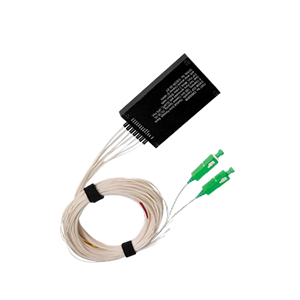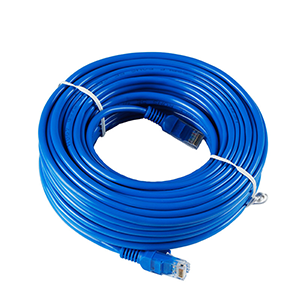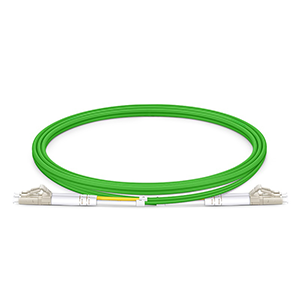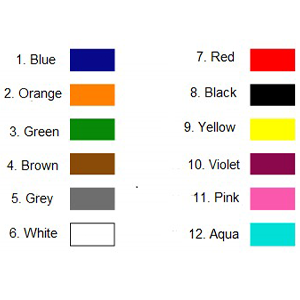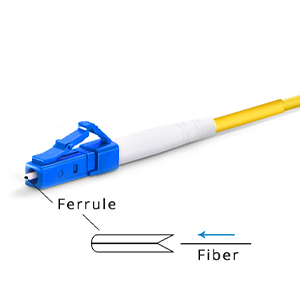DWDM technology plays an important role in optical communications. This article will explore the five key components of a DWDM system. We will first explain the basic working principle of a DWDM system and explain its main advantages and application scenarios. Next, we will analyze the five key components of a DWDM system in depth, including light sources, multiplexers and demultiplexers, optical fibers, optical amplifiers, and optical detectors. We will introduce the functions of these components and analyze their roles and performance requirements in a DWDM system. Finally, we will explain the synergy between the components of a DWDM system and explain that optimizing component synergy is the key to improving DWDM performance.
Overview of the working principle of DWDM system
Let me give you a brief introduction to the basic working principle of DWDM (Dense Wavelength Division Multiplexing) system and its main advantages and application scenarios:
Working principle of DWDM system:
- DWDM system uses multiple optical signals of different wavelengths to be transmitted simultaneously on a single optical fiber
- These optical signals of different wavelengths are multiplexed and transmitted on a single optical fiber through an optical division multiplexer</ li>
- At the receiving end, the optical splitter will separate these optical signals of different wavelengths
- Each wavelength corresponds to an independent channel and can carry different data services
The main advantages of DWDM system:
- Greatly improve the fiber transmission capacity: a single fiber can transmit up to 80-160 independent channels at the same time
- Improve the utilization rate of fiber resources: make full use of the bandwidth resources of a single fiber
- Improve transmission efficiency and flexibility: Each channel can independently carry different types of services
- Reduce deployment costs: Compared with laying multiple optical fibers, DWDM can greatly reduce the demand for optical cable resources
Typical application scenarios of DWDM systems:
- Long-distance trunk transmission network: DWDM is widely used in trunk networks to improve capacity and efficiency
- Metropolitan area and access networks: DWDM is used in metropolitan area networks and access networks to expand network coverage
- Data center interconnection: DWDM helps to connect optical interconnection between data centers at high speed
- Wireless backhaul network: DWDM can provide high-speed optical fiber backhaul links for wireless networks such as 5G
In general, DWDM technology greatly improves the transmission capacity and efficiency of optical networks by multiplexing multiple optical signal channels on a single optical fiber, and is widely used in trunk transmission, metropolitan area networks, data centers and other fields. Its flexibility and resource utilization advantages also make it one of the important directions for the development of future optical networks.
Five key components of DWDM system
Let me introduce you to the five key components of DWDM system in detail:
Light source:
- The light sources used in DWDM system mainly include DFB laser and external cavity laser
- DFB laser has the characteristics of narrow line width, high optical power, flexible tuning, etc., which is very suitable
- External cavity laser can provide narrower spectral line width, which is beneficial to DWDM channel spacing
- DWDM light source needs to have high stability , tunability, etc. to ensure the performance of each channel
Multiplexer and demultiplexer:
- The multiplexer is responsible for multiplexing multiple optical signals of different wavelengths to a single optical fiber for transmission
- The demultiplexer separates the multiplexed optical signals into independent wavelength channels
- These two devices are key components for DWDM systems to achieve multi-channel multiplexing
- They need to have excellent performance such as low insertion loss, high isolation, and narrow channel spacing
Optical fiber:
The optical fiber used in DWDM system needs to have extremely low chromatic dispersion and broadband attenuation characteristics
- Single-mode optical fiber is the first choice for DWDM system, and its chromatic dispersion and loss indicators are better
- The linear and nonlinear characteristics of optical fiber will also affect the transmission performance of DWDM system
Optical amplifier:
- Common optical amplifiers in DWDM system include EDFA and Raman amplifier
- They can effectively compensate for the loss in optical fiber transmission and extend the transmission distance
- Optical amplifier needs to have flat gain Spectral characteristics to ensure balanced performance of each channel
Optical detector:
- The optical receiving end of the DWDM system uses a high-sensitivity, high-speed optical detector
- Common detectors include PIN photodiodes and avalanche photodiodes
- Their sensitivity, response speed and other performance directly affect the receiving capacity of the DWDM system
In short, the DWDM system is composed of these five key components, and their performance indicators directly determine the transmission performance and reliability of the entire DWDM system. The selection and optimization of these key components is the key to achieving a high-performance DWDM system.
Key to the collaborative work of DWDM system components
Let me elaborate on the synergy between the components of the DWDM system and the key role of optimizing component collaboration in improving the performance of the DWDM system:
Synergy between DWDM components:
- Light source: Provide high-performance stable optical signals
- Multiplexer: Multiplex multiple optical signals onto a single optical fiber
- Optical fiber: Carry multiplexed optical signals</l i>
- Optical amplifier: Compensate for the loss during optical fiber transmission
- Demultiplexer: Separate multiplexed signals into independent wavelength channels
- Optical detector: Detect and receive demultiplexed optical signals
The key significance of component coordination:
- Ensure that each component can work in coordination to form an efficient DWDM transmission link
- Optimize the performance matching and coordination between components to maximize DWDM performance< /li>
- For example, wavelength matching between light source and multiplexer, power matching between amplifier and transmission fiber, etc.
Key measures to optimize component collaboration:
- Accurately match the performance parameters of each component to eliminate performance bottlenecks between different components
- Reasonably design the interface and signal transmission characteristics between components to achieve seamless connection
- Use adaptive control technology to dynamically adjust the working status between components
- Apply highly integrated DW DM chip, to achieve tighter integration and coordination between components
Expected benefits of optimizing component coordination:
- Greatly improve the transmission capacity and transmission distance of DWDM system
- Significantly improve the transmission performance and reliability of DWDM system
- Reduce the complexity and cost of DWDM deployment and operation and maintenance
In short, the close coordination between the key components of the DWDM system is the key to ensure its high-performance operation. Only by optimizing the performance matching and coordination between components can the DWDM system maximize its advantages and meet the growing demand for high-bandwidth communications.
Summary
DWDM system is a key technology for building high-capacity optical transmission networks. Our company has long been focusing on the research and development and application of DWDM technology and has rich practical experience. We provide various high-performance DWDM system components, including light sources, multiplexers, optical fibers, optical amplifiers, etc., which can be widely used in long-distance optical fiber communications, metro networks, and data center interconnection.
Our DWDM components adopt advanced manufacturing processes, have excellent optical performance and reliability, and can effectively support the high-speed transmission and large-capacity requirements of DWDM systems. At the same time, our team of engineers will provide you with professional system integration services to ensure that the various components of the DWDM system work together and perform at their best. Contact us now to learn more. We will do our best to provide you with the best quality products and solutions.
Dense Wavelength Division Multiplexing FAQ
Dense Wavelength Division Multiplexing (DWDM) is a technology used in fiber optic communications to increase the capacity of optical fiber networks by multiplexing multiple light wavelengths (channels) into a single fiber.
DWDM works by using multiple laser sources, each transmitting a different wavelength of light. These wavelengths are combined using a multiplexer at the transmitting end and separated by a demultiplexer at the receiving end, allowing simultaneous data transmission over a single fiber.
DWDM offers increased bandwidth, higher data transmission rates, efficient use of existing fiber infrastructure, and the ability to support long-distance communication without repeaters.
DWDM systems typically use channel spacings of 100 GHz or 50 GHz, corresponding to 0.8 nm or 0.4 nm, respectively. The wavelengths used usually fall within the C-band (1530-1565 nm) and L-band (1565-1625 nm) of the optical spectrum.
DWDM uses narrower channel spacing and more wavelengths, allowing for higher data rates and greater capacity compared to CWDM, which has wider channel spacing and fewer wavelengths.
DWDM is used in telecommunications networks, data centers, high-speed internet services, metropolitan area networks (MANs), and long-haul optical networks to handle large volumes of data and increase network capacity.
By multiplexing multiple wavelengths onto a single fiber, DWDM significantly increases the amount of data that can be transmitted simultaneously, thus improving overall network capacity.
Key components include wavelength multiplexers and demultiplexers, optical amplifiers (such as Erbium-Doped Fiber Amplifiers or EDFAs), optical add/drop multiplexers (OADMs), and optical transceivers.
Challenges include managing wavelength dispersion, avoiding channel interference, ensuring optical signal quality, and handling the complexity and cost of the equipment and network design.
DWDM can enhance network performance by increasing bandwidth and reducing latency. However, it may also require more complex maintenance procedures and monitoring to ensure proper operation and performance of the multiple wavelengths.


